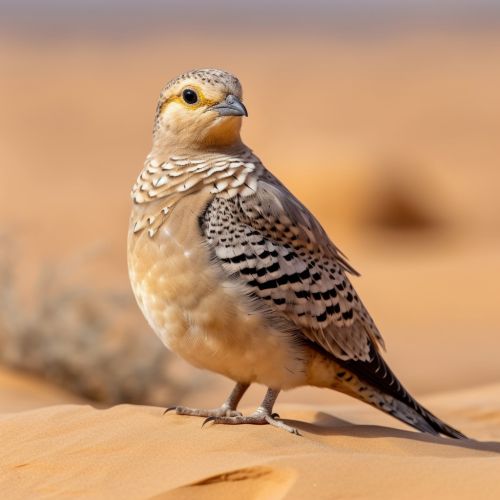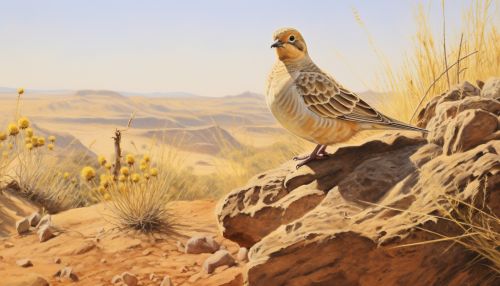Pallas's Sandgrouse
Description


The Pallas's Sandgrouse (Syrrhaptes paradoxus) is a medium-sized bird species that belongs to the sandgrouse family, Pteroclididae. Named after the German naturalist Peter Simon Pallas, this bird is known for its distinctive appearance and unique adaptations to its arid environment.
Taxonomy and Systematics
The Pallas's Sandgrouse is classified under the genus Syrrhaptes, which is one of the two genera in the family Pteroclididae. The genus name Syrrhaptes is derived from the Greek words "syr" (together) and "haptes" (to fasten), referring to the bird's fused toes, a unique characteristic among sandgrouse.
Physical Characteristics
Pallas's Sandgrouse are medium-sized birds, typically measuring between 30 to 40 cm in length. They have a compact body, a small head, and a short, stout beak. The plumage is predominantly grey and brown, providing excellent camouflage against the sandy and rocky terrain of their habitat. Males and females exhibit sexual dimorphism, with males having a more pronounced black belly patch and a pinkish hue on the chest.
Distribution and Habitat
The Pallas's Sandgrouse is native to the steppes and semi-deserts of central Asia, extending from Mongolia and northwestern China to Kazakhstan and southern Russia. They are highly adapted to their arid environment, with their plumage providing excellent camouflage against predators.
Behaviour and Ecology
Pallas's Sandgrouse are gregarious birds, often seen in large flocks. They are primarily terrestrial, spending most of their time on the ground. Their diet consists mainly of seeds, supplemented with green shoots and leaves.
Reproduction
The breeding season of the Pallas's Sandgrouse typically starts in April and extends until June. The female lays two to three eggs in a shallow nest on the ground. Both parents take turns incubating the eggs, which hatch after about 20 to 25 days.
Conservation Status
The Pallas's Sandgrouse is currently listed as "Least Concern" on the IUCN Red List of Threatened Species. However, like many other bird species, they face threats from habitat loss and degradation due to human activities.
